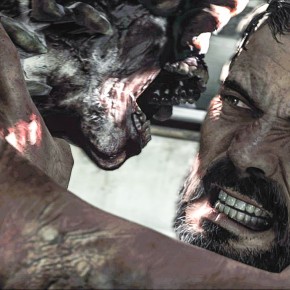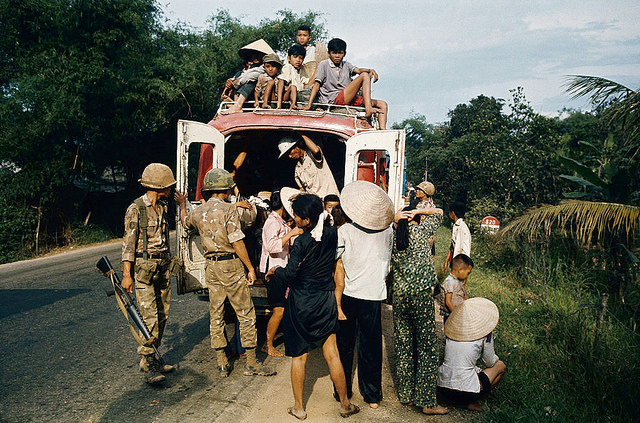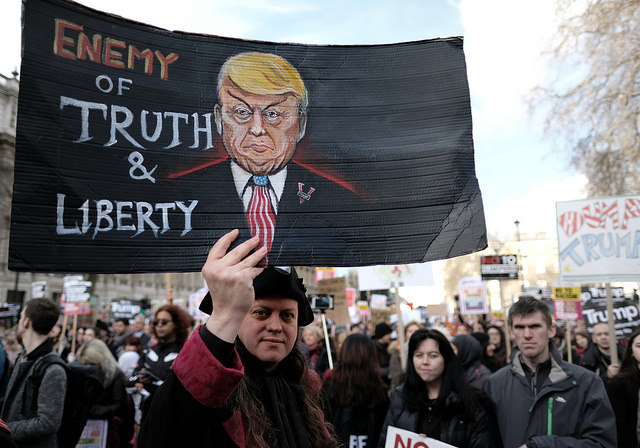When I was little, anti-war sentiments were pervasive. Enough people remembered the horrors of the two world wars to make the notion of military action as policy by other means deeply problematic. Repugnance at the futility of the Vietnam War made returning soldiers feel abandoned and ashamed. Nuclear annihilation loomed. But every boy I knew still wanted a G.I. Joe.
My cousin, three years older than I was, loved his. I remember him showing off all the accessories he had collected, the advanced weaponry and futuristic communications gear. In retrospect, I’m sure that the pleasure he took in this demonstration was enhanced by the knowledge that I not only did not possess a G.I. Joe at the time, but was unlikely to have one in the future, either. My mother had forbidden it.
Years later, when I became fascinated with all aspects of World War II, I asked her why she had permitted me to build plastic models of fighter planes and battleships, after being so adamantly opposed to G.I. Joe. “There’s a big difference between history and fantasy,” she replied. “When you play with a G.I. Joe, you must invent reasons to use his equipment.”
Even at the time, this answer impressed me. I knew that I engaged in fantasy whenever I played with my P47, BF109 and Spitfire. But the bounds of that fantasy were also set by what I had learned about actual air battles in the European Theater. I’m sure a great many boys would have cheerfully deployed their historically accurate toys in anachronistic fashion. I knew quite a few who did. For my own part, though, I was not willing to commit that transgression. And that was apparently sufficient grounds for my mother to relax her ban on playing war.
When I started following what had happened in Ferguson, Missouri last week, this childhood memory came immediately to mind. It seemed clear to me that the local police were excited to find a use for all the equipment they had acquired in recent years. Although their draconian response to both the protesters and the media covering the situation may have been motivated by political and racial bias, it was also driven by technological imperatives. Once you have a new gadget, the urge to play with it is very strong.
In spite of the damage their approach was doing from a publicity standpoint, the police continued to act as if they were dealing with battle-hardened guerrillas instead of ordinary people fed up at perceived injustice. As numerous commentators pointed out, the footage coming through television and social media feeds demanded a double-take. Were these pictures from Gaza? Or perhaps Syria? Maybe Iraq? Since when did law enforcement in a place like Ferguson — or even the far larger city of St. Louis — look and act like characters in a video game? Even as part of me wanted to reinforce these expressions of astonishment, however, I started to question its provenance.
Outrage over the conduct of the police in Ferguson continues to mount, both as more facts are learned about the manner of Michael Brown’s death and as coverage of extreme crowd-control measures makes sure that “the whole world is watching.” But so is the backlash against this outrage. Incited by the same conservative talk-show hosts and websites that have been hammering Barack Obama since he entered the White House, this counter-protest testifies to how split public opinion in the United States truly is. Pundits on both the Left and Right have been quick to regard Ferguson as an index of national dysfunction, proof that the divisions of the post-9/11 era continue to widen at an alarming rate.

That’s why it’s especially important to take a step back from the disturbing stories circulating around the conflict in order to see it from a broader perspective. Whether you believe that we are witnessing an unprecedented militarization of the police, which turns underprivileged minorities and their supporters into de facto “enemy combatants” in their own homeland, or that the liberal media is once again doing its best to fan a brushfire into a raging inferno, it is tempting to focus on what makes the situation in Ferguson stand out. Yet the eagerness with which people on all sides are doing this has a way of obscuring crucial continuities, not only with developments of the past decade, but further back in American history.
As a progressive, I find the hyperbole on the Left especially disquieting. And it’s not just coming from younger people with a dearth of political experience. Baby Boomers who “were there, man” have argued that the police response in Ferguson outstrips anything that happened during their own youth. Perhaps the endless rehashing of Berkeley, Columbia, Chicago, and Kent State in which they have willingly indulged, that “everything was more exciting back then” mindset, has paradoxically erased their memories of just how brutal the clampdowns of the late 1960s and early 1970s really were, whether sponsored by government itself or its self-appointed deputies. There’s a reason Easy Rider ends the way it does.
Although reactionaries started on the defensive, they have done their best to match their bêtes noires exaggeration for exaggeration. Michael Brown was a hardened criminal. The protesters are a mixture of welfare cheats, Marxist agitators and amoral narcissists like The Joker from The Dark Knight who just want to watch the world burn while taking selfies to document their role as participant observers. Members of the media are deliberately getting arrested so that they can complain about erosion of the Fifth Estate’s rights.
Then there are the conspiracy theorists who regard the fixation on Ferguson as a manufactured distraction, whether expertly engineered by the international Zionist conspiracy to make the world look away from the horrors of Gaza or by the secrets cabals of the WHO, CDC and other health organizations who don’t want us to know what’s really happening with the Ebola virus. To these benighted individuals — and there are a lot more of them than you might suppose — the timing of Michael Brown’s shooting and the local police’s wagon circling is just a little too perfect to be random.

But here’s the depressing truth. What has transpired in Ferguson is no more than a particularly news-friendly instance of a decades-long trend. From Bull Connor’s firehoses to the helicopters tear-gassing students on Telegraph Avenue; from the Philadelphia police’s bombing of MOVE headquarters to the military occupation of post-Katrina New Orleans; from the FBI’s campaign against the Black Panthers to the NSA’s surveillance of anyone who so much as looks up terrorist weaponry such as pressure cookers; from the assault on the SLA house in Los Angeles to the attack on David Koresh’s Waco compound, the militarization of policing has been a concern for decades and in three distinct senses: as an assertion of technological superiority, as a willingness to deploy the protocols of espionage against one’s own citizenry, and, more generally, as an unapologetic blurring of the line civilian and soldier, whether on the part of the state’s representatives or the people they are directed to contain and control.
This trend was already in evidence as the original G.I. Joe action figures, representing the four branches of the U.S. military, evolved into the more nebulous, gadget-centered versions that I came to know in the 1970s. Although Joe was definitely supposed to be the proverbial good guy, neither his uniform, nor his equipment, nor the narratives Hasbro suggested in his packaging made it entirely clear whom he was being a good guy for. Maybe he was working undercover, in some sort of black ops capacity. Or maybe he was just a mercenary with a heart of gold, not unlike the character of Han Solo who would soon charm audiences in the first Star Wars movie.
Frankly, none of the G.I. Joe owners I knew cared about such arcane distinctions. As my mother had surmised, they created scenarios for the action figure that enabled them to use as many of his accessories as possible. Indeed, the very amorphousness of his identity is what made him so appealing. Neither historical facts nor ethical quandaries set limits on their play. Simply put, he was the perfect toy for the disillusionment that accompanied the end of the Vietnam War, Watergate and the other dark news items of the day.
It is worth asking, then, what equivalents to G.I. Joe emerged in the wake of 9/11. Surely, the wild popularity of movie franchises based on comic books reflects the political uncertainty of the times. Cartoon villains are both more fun and less confusing than the shadowy conspiracies that have purportedly haunted us throughout the War on Terror. And let’s not forget that G.I. Joe himself even made it onto the silver screen, taking on the sort of organization that James Bond used to tussle with.
But I would argue that, for all the appeal of these hyperbolic reboots, there has been a nagging desire for greater realism as well. Children and grown-ups alike may glory in superpowers, whether biologically programmed or technologically engineered — the Iron Man films are perhaps the best example of the latter — but they grow anxious when those capacities seem too far removed from a plausibly proximate future. That’s why we see mundane gadgets alongside blatantly counterfactual goodies. Characters like Tony Stark and Lucius Fox in the Dark Knight trilogy exist, in part, in order to make our suspension of disbelief easier to manage.

When I spotted this children’s toy set at my neighborhood Wal-Mart the other day, I realized with a start that it aspires to this kind of realism. The body armor and seemingly out-of-scale weapons do not reflect wishful thinking — “I wish the police were as cool as comic book characters” — so much as a matter-of-fact assessment of the militarization of law enforcement. Like the boys who played with G.I. Joe in my own youth, the kids who play with sets like this will be able to give full rein to their fantasies of violent confrontation because its components do not require too much imagination to believe in.
I do not mean to suggest here the children who enjoy such toys are destined to be numb to the state’s brutal intrusion into everyday life. The conviction that there is a simple correlation between the culture one consumes and the person one becomes does not do justice to the complexities of human response. My childhood fondness for war machinery did not translate into a grown-up fondness for war. But I do think it’s worth paying closer attention to the ways in which a five or ten-year-old’s mode of play persists into her or his life as an adult.
When deeply held fantasies can be realized with technology, the difficulty of restraining them looms large. If Michael Brown’s tragic death is not to be wholly in vain, we must think long and hard about what law enforcement has become at a time when the rights of the individual are increasingly restricted and the potential for inappropriate use of technology is expanding rapidly. There is nothing intrinsically wrong with playing police officer when you are a child. The problem is when police officers act like they are still playing in the backyard.
Photographs of G.I. Joe courtesy of Charles Roberts, Dave, and The Conmunity – Pop Culture Geek. Published under a Creative Commons License. Photograph of Police Play Set courtesy of the author.





